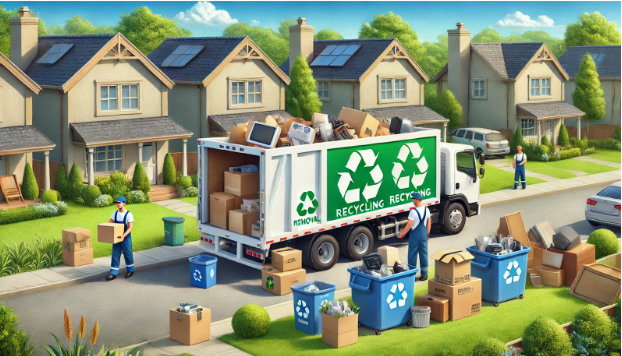
How to Recycle Unwanted Items: The Ultimate Guide for a Cleaner Environment
Recycling unwanted items isn’t just about getting rid of things you don’t need; it’s about creating a positive impact on our planet. Many of us hold onto items, unsure of how to dispose of them properly, leading to clutter and unnecessary landfill waste. This guide will walk you through recycling common household items responsibly, highlighting practical methods that make it easy and beneficial. By the end, you’ll have actionable steps to help the environment while maintaining a clutter-free home.
Why Recycling Unwanted Items Matters
Recycling unwanted items isn’t just about waste management; it’s essential for environmental sustainability. Here’s why:
- Reduces landfill waste: Items like electronics, batteries, and clothing can sit in landfills for years, leaking harmful substances into the soil.
- Conserves resources: Recycled materials require less energy and raw resources than producing new products.
- Decreases pollution: Proper disposal reduces air and water pollution caused by landfill chemicals.
Creative Ways to Recycle or Repurpose Household Items
- Upcycling Furniture: Transform an old dresser into a bookshelf or garden planter.
- Turning Glass Jars into Storage: Use jars for storing spices, nuts, or bathroom essentials.
- DIY Crafts from Cardboard: Turn cardboard boxes into storage bins, playhouses, or pet beds.
- Composting Food Waste: Instead of throwing away food scraps, compost them to enrich your garden soil.
Common Unwanted Items and How to Recycle Them
Here’s a breakdown of how to recycle various
household
items efficiently:
| Item | How to Recycle | Tips for Effective Recycling |
|---|---|---|
| Electronics | Drop off at electronic recycling centers or return to stores that offer take-back programs. | Remove all personal data before recycling. |
| Batteries | Use dedicated battery drop-off points at stores or community centers. | Never throw batteries in regular trash. |
| Plastic Bags | Return to store recycling bins or switch to reusable bags. | Keep a bag bin to store bags until your next drop-off. |
| Old Clothes | Donate, sell, or recycle through textile recycling programs. | Use donation bins or contact local charities. |
| Furniture | Sell or donate if in good condition; otherwise, check for local bulk trash pickup with recycling options. | Many cities offer free or low-cost pickup services. |
| Metal and Scrap | Take to a scrap metal recycler; many centers pay for metal recycling. | Separate metals for easier recycling. |
| Glass | Clean and sort by color, then drop off at a glass recycling facility or curbside program. | Avoid mixing glass types for efficient recycling. |
Step-by-Step Guide to Recycling Unwanted Items
1. Start with a Home Inventory
- Go through your belongings and identify items you no longer need. Look in storage spaces, closets, and drawers for unused electronics, old clothes, and more.
- Tip: Sort items into categories—donate, recycle, and discard.
2. Know Your Local Recycling Centers
- Familiarize yourself with local facilities that accept items like electronics, textiles, or hazardous waste.
- Many websites provide maps to locate nearby recycling centers.
3. Clean and Prepare Items for Recycling
- Rinse glass jars, flatten cardboard, and organize smaller items like batteries and light bulbs separately.
- Pro Tip: This step prevents contamination in the recycling process.
4. Drop-Off or Schedule Pick-Up
- Drop items at designated centers or arrange for pick-up services that cater to specific recyclables.
- For larger items like furniture, check if your municipality offers bulk pickup.
5. Educate and Engage
- Share recycling tips with family and friends, and encourage community involvement.
- The more people recycle properly, the greater the impact on reducing waste.
FAQ: Recycling Unwanted Items
1. How do I know if an item is recyclable?
Check your local recycling program’s guidelines. Many have specific lists of accepted materials.
2. What should I do with hazardous materials like paint and batteries?
Hazardous items should never go into regular trash. Locate a nearby hazardous waste disposal facility to safely handle these materials.
3. Can I recycle broken electronics?
Yes, broken electronics can often be recycled. Be sure to wipe any data from devices before recycling.
4. Are all types of plastic recyclable?
Not all plastics are accepted in recycling programs. Look for recycling symbols on plastics, and consult your local guidelines.
